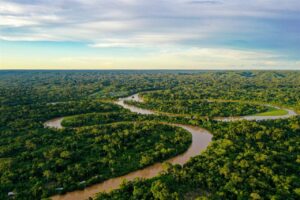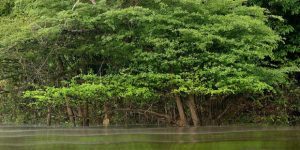Microplastics are not only found in the air, but also in the interior of animals that often serve as food, such as fish. In this sense, a group of scientists from the Amazon State University discovered that several species of fish intended for human consumption had this harmful material inside them.
The research began in early 2023 when experts decided to analyze the river waters and sediments of the Ecuadorian Amazon, more precisely in the Pastaza region, Ecuador. By September of the same year, researchers found microplastic particles in the digestive tracts of edible fish caught in the same river.
These tiny plastic pieces, derived from solid polymers smaller than five millimeters, can enter the bloodstream, causing health problems. This is because they often contain toxic chemicals, as well as absorb contaminants from the environment. For this reason, those who consume fish with this material inside them may be exposed to long-term health risks.
 amazonia[/caption>
amazonia[/caption>
Ricardo Burgos, a full-time professor at UEA and co-author of the study, explained that microplastics penetrate the tissues of fish and cause hormonal alterations. “There are consequences in many aspects, from behavior to physiology,” Burgos stated.
So far, the impact of microplastics in the Amazon basin is still unknown, which is why they are considering carrying out a “much broader study review.” In this region of the Amazon, there are different species of migratory fish with long, medium, and short-range that can carry these elements in their digestive systems, such as the golden catfish and the bocachico.
 Los peces de río del Amazonas contenían en su interior más de 11 tipos de microplásticos.
Los peces de río del Amazonas contenían en su interior más de 11 tipos de microplásticos.
Concern about the appearance of microplastics in river fish
Noemí Castro, one of the authors of the report “Comparison of the presence of microplastics in the digestive tract of fish for human consumption in an urban and rural area of the Pastaza province,” mentioned that they were surprised to find a higher presence of these particles in the rural area.
In this regard, researchers detailed that they found 18 types of microplastics in the stomachs of five fish caught in the Cononaco River, inside the Yasuní National Park, and 11 varieties of this type of material present in four fish caught in the Puyo River.
Experts ensure that the presence of microplastics in rivers and their fish “is a complex problem,” hence it requires complex solutions, such as replacing polymers with biodegradable materials or degrading plastic waste.
Have you visited our YouTube channel yet? Subscribe now!

